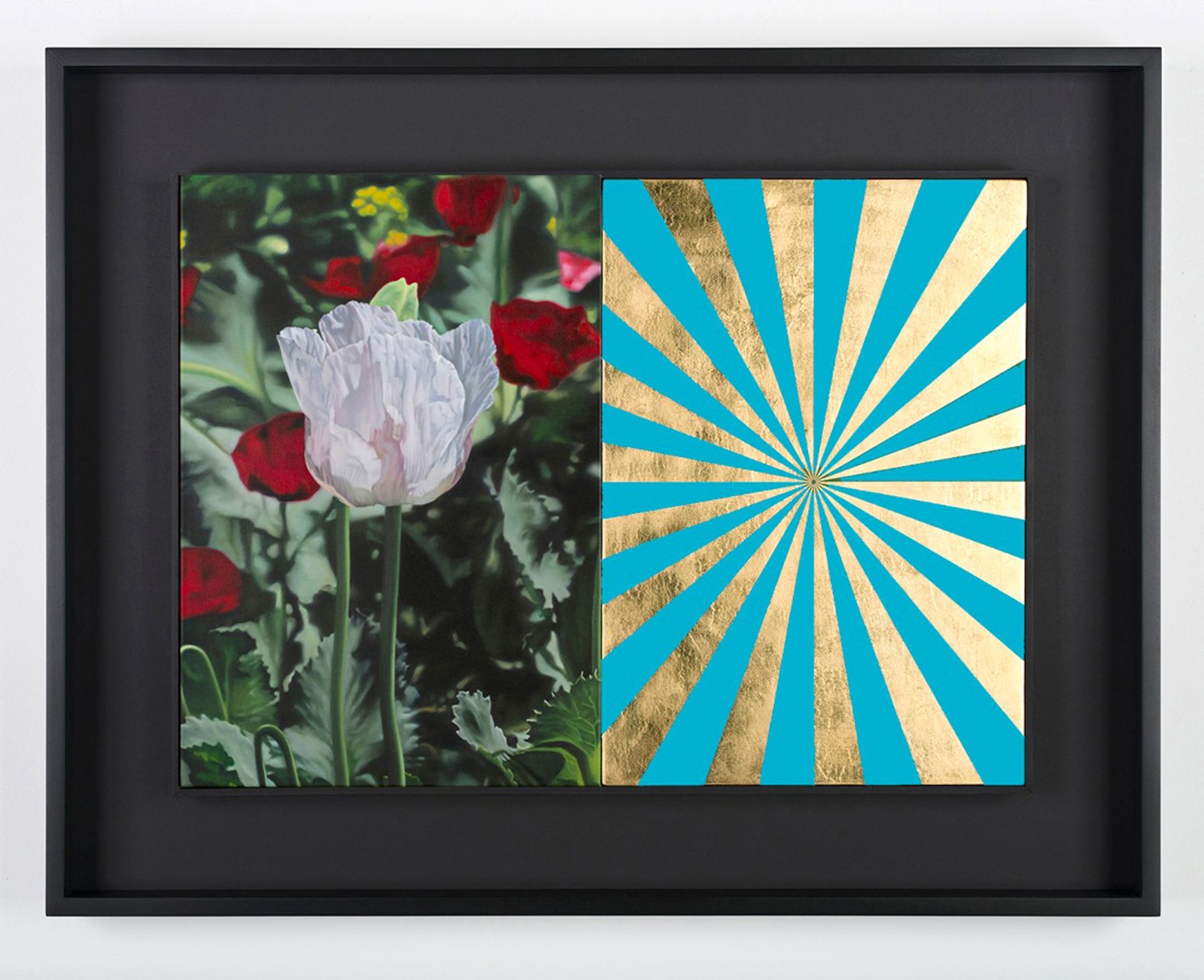Two visual motifs recur in Mustafa Hulusi’s work of the last five or six years: one, a vivid, graphic pattern of alternating coloured and white rays, radiating from a central point, usually called Expanders; the other, vividly photorealist paintings of flowers, fruit and foliage, in stark sunlight, often against an azure sky. Both series, in their own fashion, are placeholders for the idea and sense of plenitude. The Golden Age comprises works that combine these series into diptychs, abutted side by side and framed in dark wood, in which the high-key naturalism of the flowers and fruit clashes with the Op dazzle of the expanders. First conceived as designs for billboards that Hulusi installed in sites across urban London, the Expanders have become a symbol for a kind of uncompromised, uncomplicated ecstasy. The flower paintings, by contrast, stem from Hulusi’s increasingly frequent reference to his cultural roots in Turkish Cyprus, and touch on a sense of Mediterranean fertility as something premodern, classical or pre-Christian.
The ambiguous significance of these visualisations of excess is a background murmur when looking at the most recent paintings, as the works somehow manage to key themselves into a covert dialogue with much current anxiety over commodity art, about how visual pleasure in artworks now stands tainted by its association with private wealth and propertied desire, or how aesthetic experience might be coded into such economic realities. There’s a darker tone to these new paintings, literally and metaphorically. Hulusi has given the Expander designs echoes of Byzantine art – gold leaf replaces what would have been the white bands, while the interpolated colours have the deeper, cooler tonality associated with Byzantine mosaic. And the flowers – white poppies and black tulips – are ciphers of intoxication. The ‘afyon’ in Afyon 3 (S) and Light Blue and Gold Expander (S) (2013), for example, is the Turkish word for both poppy and opium. Tulips, meanwhile, might make reference to the ‘tulip period’ of the eighteenth-century Ottoman Empire, a time of modernisation and internationalisation as well as of aristocratic extravagance, which took its name from the craze that turned tulips into luxury status symbols – much as had happened in the ‘tulip mania’ bubble of commodity speculation that hit the Netherlands a century earlier. Hulusi’s black tulips have a sumptuous yet unhealthy air, as if they are set to fade and wither soon.
Contained in heavy, dark frames, these latest works force a strange jarring of contemplative beauty against something less open and more hostile, of the order of religious ornament – sacred objects meant to embody power. As the space of photographic depth surrounding the flowers is jammed by the surface luxury of the Expander, two orders of sense – freedom and domination – face off uncomfortably. If there’s aesthetic that approaches the political here, it has something to do with how representations of abundance are reduced to luxury and finitude. And yet Hulusi’s gallery- locked diptychs can’t quite be contained in this way – they always point to material abundance, and the desire for it, as something existing outside and beyond the object. It cannot so easily be owned.
This article was first published in the May 2013 issue.
